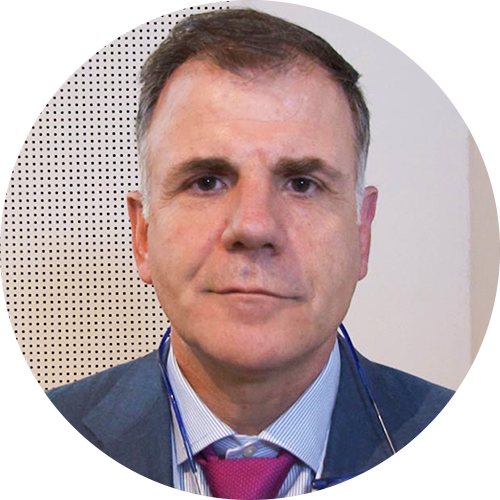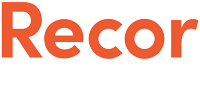Interview
Expert Insights on Hypertension Guidelines: ESC¹ vs. ESH²
September 22, 2025
A Joint Interview with Prof. Konstantinos Tsioufis (University of Athens, Hippocratio Hospital, Greece) and Prof. Sofie Brouwers (OLV Ziekenhuis Aalst, Belgium)
Interviewer: Dr. Giorgio Gobbi, Senior Director Scientific Affairs Recor Medical EMEA
1. How do you see the adoption of the updated hypertension guidelines in clinical practice?
Prof. Tsioufis (ESH):
The ESH guidelines were well received across Europe and beyond, especially for their treatment thresholds and targets. The elevation from Class III to Class II for RDN was a major step forward, boosting confidence among specialists. Yet, adoption is still mostly limited to specialized centers due to reimbursement issues and lack of structured referral pathways from primary care.
Prof. Brouwers (ESC):
The ESC guidelines have helped solidify RDN as one of the three pillars of hypertension treatment—alongside lifestyle changes and medication. While some physicians were already using RDN in studies and registries, the updated guidelines have helped push its acceptance further, especially in national societies and communities. Some parts of the community were already convinced of RDN’s value before the guidelines, while others waited for formal endorsement. The updated guidelines have opened doors where skepticism remained.
2. What are the similarities and differences between the ESH and ESC guidelines, especially regarding RDN?
Prof. Tsioufis:
Both guidelines are largely aligned in recommending similar medications, single-pill combinations, and out-of-office BP measurements. The key difference is that ESC integrates hypertension into overall cardiovascular risk, while ESH treats it as an independent condition. Both support RDN for selected patients and emphasize shared decision-making.
Prof. Brouwers:
The guidelines are very similar, especially in their treatment recommendations. ESC places more emphasis on elevated cardiovascular risk when considering RDN, while ESH does not highlight this aspect as strongly. Both stress the importance of discussing RDN with patients before proceeding.
3. How should physicians apply these guidelines practically?
Prof. Tsioufis:
Use office, home, or ambulatory BP measurements for diagnosis. Start treatment with single-pill combinations and consider RDN for patients with uncontrolled or resistant hypertension.
Prof. Brouwers:
Start with lifestyle changes, then move progressively to triple combination therapy. If BP targets aren’t met or medications aren’t tolerated, discuss RDN early. It’s a one-time intervention with minimal side effects and should be considered an alternative to escalating drug therapy even further.
4. Are you satisfied with the adoption of the guidelines across Europe? Is there room for improvement?
Prof. Tsioufis:
No, the high rate of uncontrolled hypertension suggests poor implementation. We need better patient engagement, education, and structured pathways to improve adoption.
Prof. Brouwers:
Adoption is very variable. There’s clear room for improvement, especially in reaching general practitioners and ensuring widespread understanding.
5. What are the obstacles to wider adoption of RDN, and how can we overcome them?
Prof. Tsioufis:
Barriers include limited access, reimbursement issues, and lack of referral pathways. RDN’s BP-lowering effect is modest but meaningful. We need structured collaboration among GPs, cardiologists, and nephrologists to refer suitable patients.
Prof. Brouwers:
The legacy of the HTN-3 trial created skepticism. Although newer devices and evidence have revived interest, some countries remain reluctant. Increasing awareness among physicians and patients is key to overcoming these hurdles.
6. Is patient preference for RDN over drug escalation gaining traction?
Prof. Tsioufis:
Yes. Medicine is shifting toward patient-centered care. Informed patients increasingly prefer interventions like RDN over escalating drug regimens.
Prof. Brouwers:
Absolutely. When medications are ineffective or poorly tolerated, patients are interested in alternatives like RDN—especially in specialized environments where it’s well understood.
7. How do you envision the future of RDN adoption?
Prof. Tsioufis:
In the near future, RDN will remain in specialized centers. But with more real-world data, it could be offered more broadly and earlier in the disease course. It may also benefit conditions like atrial fibrillation, heart failure, and sleep apnea.
Prof. Brouwers:
Awareness must grow among both patients and physicians. RDN should be performed in experienced centers, but every treating physician should consider and discuss it with patients. Referral pathways must be streamlined.
References:
| 1 | European Heart Journal, ehae178, https://doi.org/10.1093/eurheartj/ehae178 |
| 2 | Mancia et al. Journal of Hypertension 2023, 41:1874-2017 |
Disclaimer: The doctors mentioned in the material are paid consultants of Recor Medical and have been compensated for their time and expertise in participating in the content. The views expressed in the material are these physicians.
June 26, 2025
Prof. Roland Schmieder's study investigates the predictability of blood pressure reduction following renal denervation. The analysis shows a linear relationship between baseline blood pressure and the reduction: the higher the initial value, the greater the reduction.
March 11, 2025
Dr. Karl-Philipp Rommel discusses the renal denervation (RDN) procedure as a treatment for patients with severe, uncontrolled hypertension. RDN is primarily considered for patients whose blood pressure remains high despite multiple medications.



